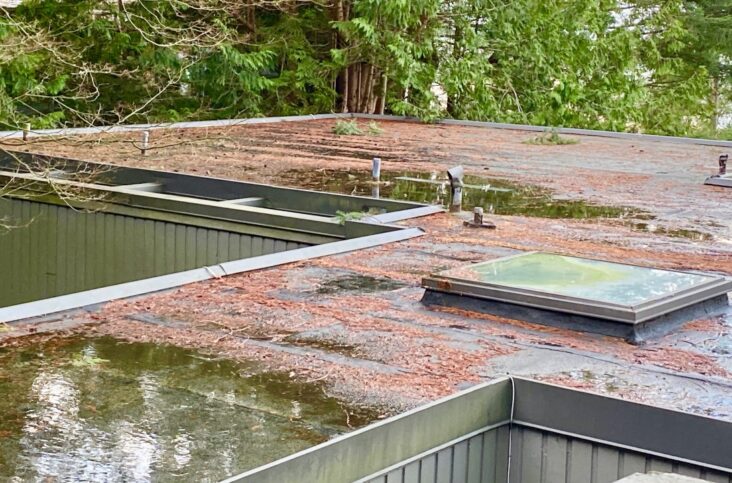Owning a house can be a challenging process. There is always something going on with the infrastructure that needs your attention. In places like Pittsburgh, issues like broken shingles, debris build-up, and faulty flashing have caused thousands of roof leaks. However, there’s nothing worse than dealing with a leaking roof.
This issue mainly occurs when your roof has weakened over time or water gets in between the caulking, gradually dripping through the ceiling. It is essential to note that Americans allocated a sum of $363 billion to enhancing, renovating, and repairing their homes in 2020. Nonetheless, the following year witnessed an 11.8% increase as this number surged to $406 billion, a value almost three times higher than the average annual growth rate of 4.4%. And by 2022, homeowners spent a staggering $472 billion on home improvements, surpassing the threshold.
Cleaning up and repairing the defect can be tedious once water leaks into your house. However, with this guide below, you can recognize when your roof is leaking and what measures you can take to prevent the problem from escalating. Here’s what you need to know:
Identify The Roof Leak

In the year 2022, Americans shattered records by investing an unprecedented amount of $567 billion to enhance the comfort and aesthetics of their homes. Nevertheless, it is worth noting that a considerable number of citizens, comprising at least 3 million homeowners and 4 million renters, dwell in homes far from optimal.
A roof can leak in multiple ways. If there is between the shingles, you may notice visible dripping. However, if you’re dealing with a burst pipe, you will notice a giant watermark on the ceiling and have to clean up massive bursts of water leaking in large volumes from the ceiling.
Therefore, you must determine how the leak occurred before starting your repair work. In places like Pittsburgh, old roofs are the most common cause of roof leaks. If you live in a house that is over 15 years old, there’s a chance it will start leaking as the caulking and protective layer strips itself away.
Consequently, you may have to go through problems like a leaking roof. If you’re unsure how to repair your roof, all you have to do is search online with the keyword Pittsburgh Roofers near me and let them handle the crisis. We recommend EAS Roofing for the job. Their expertise and knowledge in the sector can accelerate the process for you since they can identify what type of leak you’re facing and repair it accordingly.
Clear the Space
When your roof leaks, there is a high chance that your belongings in the water’s path will get damaged. The continuous dripping can cause your things to become waterlogged or damaged from being constantly exposed to water. Hence, if the roof leaks over your bed, clothes, or furniture, you must protect them. You can cover them with a plastic tarp or remove them from the leakage area. Unplug and remove appliances from the room if you have appliances nearby. Use a bucket to collect the dripping water and prevent it from staining the carpet. If water accidentally collects into your clothing, it makes the cloth smell terrible and may also cause mildew to form.
Prevent Water from Pooling

Water can cause your ceiling to bulge. Water can collect in one spot if it seeps in between the ceiling. This causes the area to soften and expand as water rushes into the site. As a result, your ceiling may have soft bulges or water-filled pockets. While you can leave these areas alone, it can cause the water to seep even deeper into your house and cause irreversible water-logging damage. Therefore, it’s best you relieve the pressure by poking into these water pockets. This allows the liquid to move out in a stream, which you can collect in a bucket and dispose of accordingly.
Investigate Roof Vents
Roof vents are ventilation points that allow air to flow through the attic space and exit through these vents. Sometimes you may be experiencing a roof leak because of these vents. You should check for cracked housings on roof vents made of plastic, and if they are made from metal, look for broken seams. You must replace the entire unit if you see visible damage or cracks. There is no other way to get rid of a destroyed ventilation system. Since roof vents are between the shingles, you should also inspect if the shingles are damaged, which is causing these leaks. This usually occurs when loose shingles move from their place.
This gives ample room for water to trickle in, and you need to connect the shingle to the vent again. If missing nails are at the bottom of the vent, you should replace them with rubber screws. Once you have secured the shingle again, you should finish the job by caulking beneath the shingle on both sides to hold the shingle down and prevent water from pooling in.
Fill in Small Holes

If there are small holes along the shingles, it can contribute to your leaky roof problem. There are many reasons why your shingles may have small holes, including drilling into the roof to mount an antenna. This is why when you leave these holes unattended, they can rot or cause water to collect in them, eventually leading to a leak in your roof. You can easily patch these holes by caulking them or blocking them off with a small cork-like substance.
Dealing with Weather Hazards
Weather hazards like excessive snow and storms in the summer can test the limits of your roof. Not only does snow accumulate on your roof, but the freezing temperature can also cause water to become an icicle around different areas of your roof, including the soffit. Gradually, the icicles cause the area beneath the shingles to expand, leading to microscopic gaps in your roof. Once this ice melts, water will start trickling into these spaces and cause your roof to drip.
The only solution to this menace is to repair the flashing and fix your shingles again. While the work is extensive, it is necessary to prevent further leaks. You must remove all the shingles down to the porous wood sheathing. From there, you must apply fit a water barrier under the sheath and then attach the shingles back. This will prevent leaks and ensure the water cannot pool under the wooden sheath.
Final Thoughts
For any homeowner, dealing with water leakage can be a nightmare. Water that seeps into your roof can be destructive. Not only can it destroy your infrastructure, but also mess up the interior of your house. However, water leakage is inevitable. This is because, with time, your roof starts weakening, allowing microscopic holes to form on the top, which in turn causes leaks.
Furthermore, problems like small holes, shifting weather patterns, and damaged roof vents can all contribute to the problem. Hence, to combat this situation, you must become proactive about maintaining your roof, ensuring you carry out monthly inspections and, at the first sign of damage, get your roof fixed.

